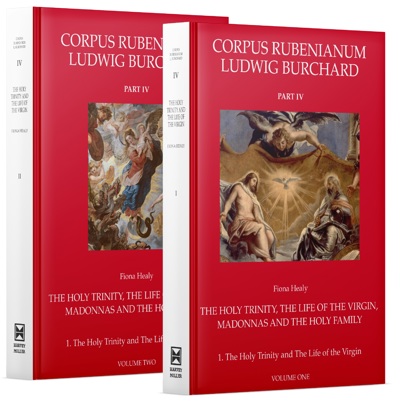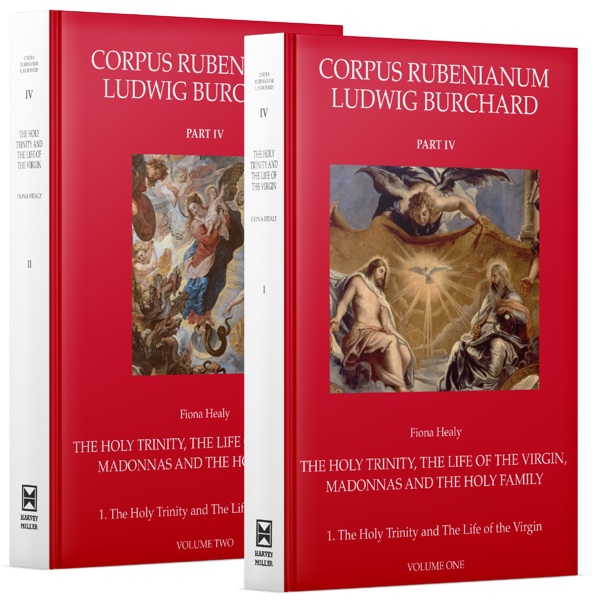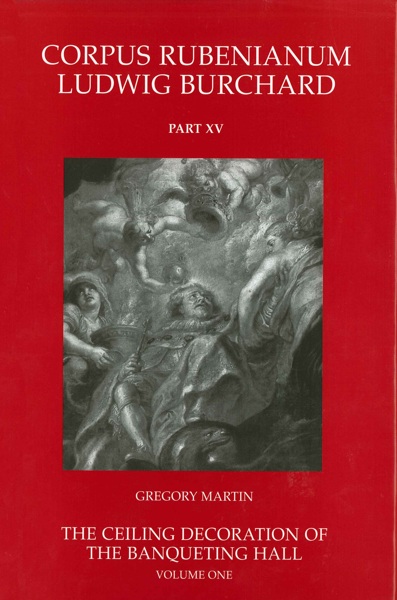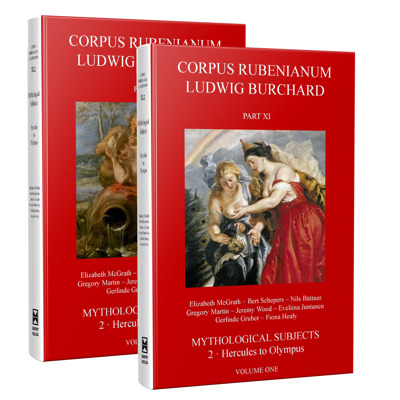
Part IV (1) The Holy Trinity, The Life of the Virgin, Madonnas, and The Holy Family
The Holy Trinity and The Life of the Virgin
Fiona Healy
- Pages:2 vols, 660 p.
- Size:175 x 260 mm
- Illustrations:256 b/w, 142 col.
- Language(s):English
- Publication Year:2024
- € 275,00 EXCL. VAT RETAIL PRICE
- ISBN: 978-1-915487-42-1
- Hardback
- Available
The book deals with the Virgin’s pre-Annunciation life, as those episodes involving her son – the Annunciation itself, Mary's suffering during Christ's passion, her assumption, and coronation
"...applause for this outstanding individual volume – along with the project as a whole, now supervised by Nils Büttner and a distinguished editorial board – is richly merited. (...) A review can barely suggest the depth of research and attention to detail included within this brilliant volume." (Larry Silver, in Historians of Netherlandish Art Reviews, January 2025)
"Fiona Healys Monographie ist eine wissenschaftlich fundierte und visuell beeindruckende Analyse eines Teils von Rubens’ religiösen Werken. Ihre detaillierten Untersuchungen bieten tiefgehende Einblicke in Rubens’ künstlerische und theologische Konzeptionen und machen diese Publikation zu einer wichtigen Quelle für Rubens-Forscher und Barockhistoriker." (Sven Schutte, in Kunstchronik. Monatsschrift für Kunstwissenschaft, 78/5, 2025, p. 308)
"This is an excellent addition to the Corpus, and Healy is to be congratulated on a thoughtful and thorough account of this group of paintings by Rubens and, above all, the Gonzaga Adoration." (Christopher Brown, in The Burlington Magazine, 168, p. 91)
Fiona Healy is an independent scholar and a member of the Editorial Board of the Corpus Rubenianum Ludwig Burchard.
Whereas other volumes in the Corpus Rubenianum series address a single topic, Part IV (The Holy Trinity, The Life of the Virgin, Madonnas and The Holy Family) deals with very distinct topics, two of which, The Trinity and The Life of the Virgin, form the subject of the present book.
More precisely, the book deals with the Virgin’s pre-Annunciation life, as those episodes involving her son – the Annunciation itself, Mary's suffering during Christ's passion, her assumption, and coronation – have been treated in the parts of the Corpus that deal with Christ's life. The focus here is on Mary's birth, upbringing and marriage, events described in varying detail in Early Christian and medieval texts. Not all the works discussed are by Rubens himself, but all show his artistic ingenuity, evident in his novel treatment of well-known subjects, often with a long visual tradition, as well as in his ability to devise new ones. Also catalogued here are such important altarpieces as The Immaculate Conception once owned by Philip IV of Spain and the magnificent Virgin as the Woman of the Apocalypse.
The very different theme of The Holy Trinity comprises just four entries, which, however, constitute half the volume. During the occupation of Mantua by Napoleonic troops, the three enormous paintings which Duke Vincenzo I Gonzaga had commissioned from Rubens were removed from the Church of Santissima Trinità. The Transfiguration and The Baptism of Christ, both prime examples of the Trinity's manifestation on earth, have survived intact. The Gonzaga Family in Adoration of The Trinity was, by contrast, cut into fragments. The large central section with the portraits of Vincenzo, his wife and parents looking up at the angels displaying a tapestry with the Trinity was, however, rescued for Mantua. Other fragments, primarily with portraits of the children and halberdiers, were dispersed, though some have since resurfaced. The analysis of this commission offers the first comprehensive treatment of the material in English and highlights this project as the earliest indication of Rubens's creative potential in designing large-scale decorative programmes.





